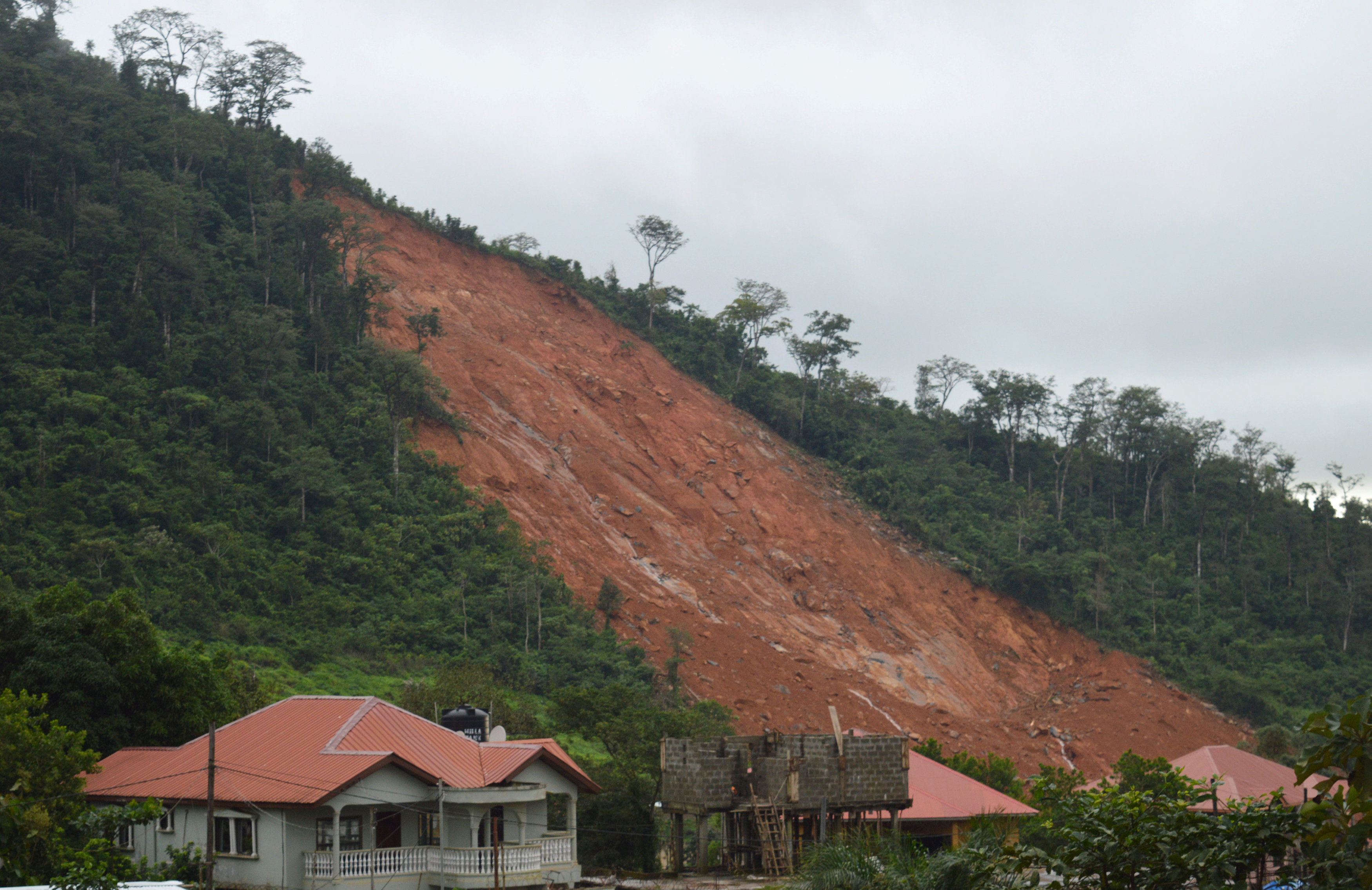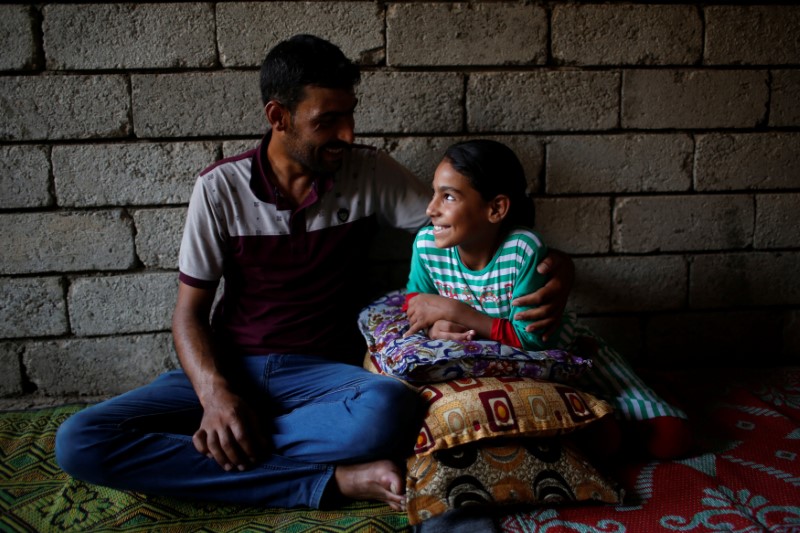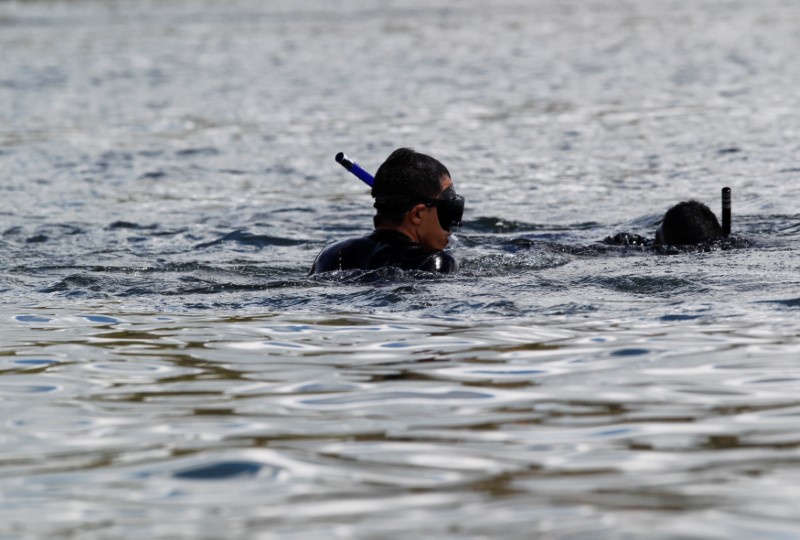
By Gabriele Pileri and Philip Pullella
CASAMICCIOLA, Italy (Reuters) – An earthquake hit the tourist-packed holiday island of Ischia on Monday night, killing two people, injuring dozens and trapping three young brothers who survived for up to 16 hours before being rescued.
Tourists and residents on the island off the coast of Naples ran out onto the narrow streets after the quake wrecked a church and several buildings. Fearing aftershocks, many decided to leave the island early.
Rescuers found a baby boy called Pasquale in the wreckage and pulled him out alive in his nappy early on Tuesday, seven hours after the shock. There was a hush followed by loud applause.
Fire crews found his brothers Mattia and Ciro, aged seven and 11, stuck under a bed nearby. They kept talking to them and fed water to them through a tube.
“I promised them that after this was all over we would all go get a pizza together,” one emergency worker said on Italian television.
They freed Mattia late on Tuesday morning and later extracted Ciro more than 16 hours after the quake hit. The parents were safe because they were in another room.
They said Ciro had probably saved his brother’s life by shoving him under the bed when the quake struck.
“The rescuers were great. We really have to thank God for this miracle,” said the island’s bishop, Pietro Lagnese.
About six buildings in the town of Casamicciola, including a church, collapsed in the quake, which hit at 8:57 p.m. (1857 GMT) on Monday. The walls of one were ripped open, exposing a kitchen with a table still set for dinner.
Italy’s National Institute of Geophysics and Vulcanology put the magnitude at 4.0, revising it up from an initial 3.6, but both the U.S. Geological Survey and the European quake agency estimated it at 4.3.
It struck three days before the first anniversary of a major quake that killed nearly 300 people in central Italy, most of them in the town of Amatrice.
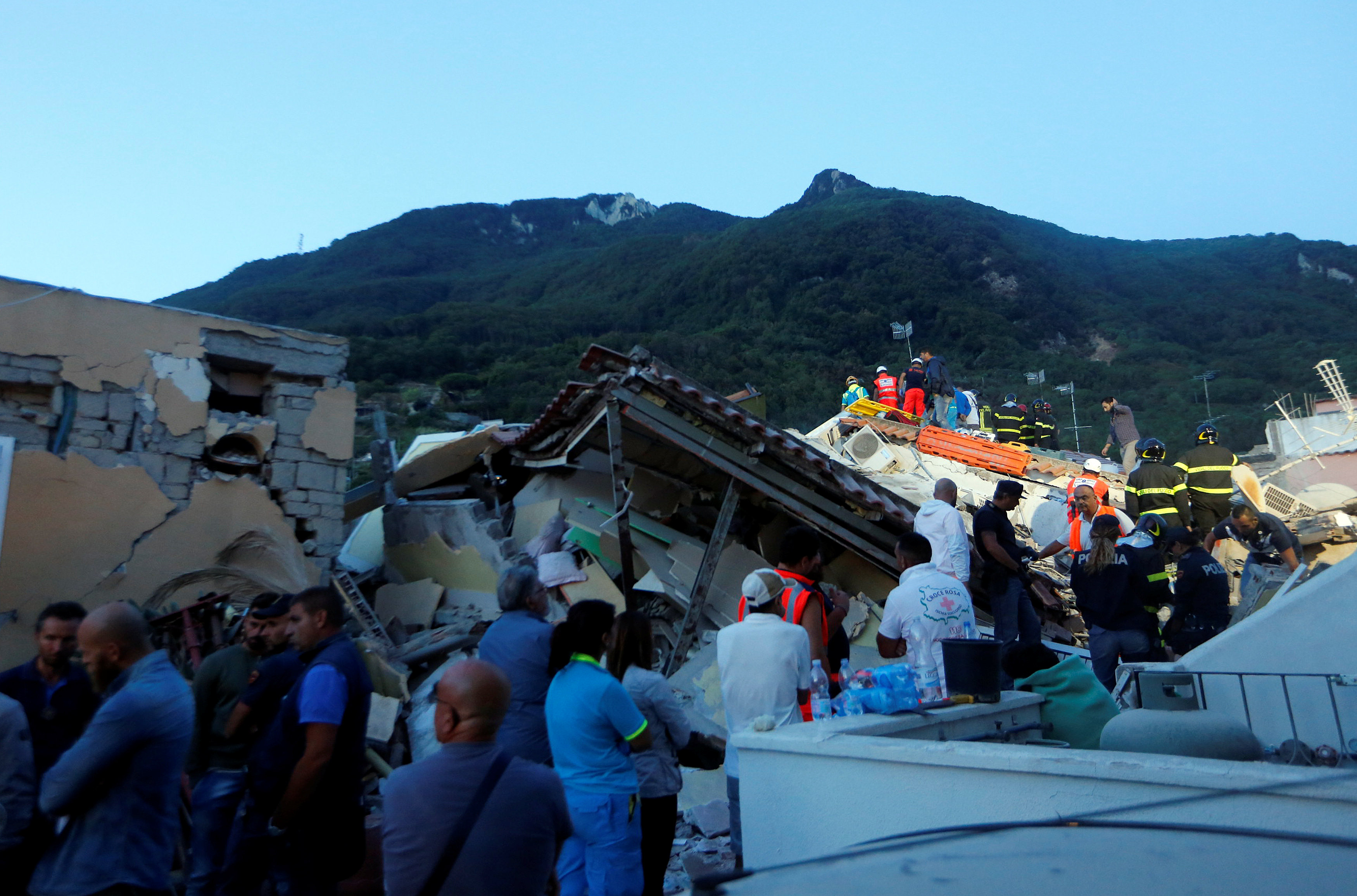
Rescue workers check a collapsed house after an earthquake hit the island of Ischia, off the coast of Naples, Italy August 22, 2017. REUTERS/Ciro De Luca
FALLING MASONRY
The director of the island’s hospital said two women were killed and about 40 injured. One of the victims was hit by falling masonry from the church of Santa Maria del Suffragio, the Civil Protection Department in Rome said.
The church was rebuilt after it, like most of Casamicciola, was destroyed by an earthquake that killed about 2,000 people in 1883.
Most of the damage was in the high part of the volcanic island. Hotels and residences on the coast did not appear to suffer serious damage but fire brigades were checking to see if they were still habitable.
The island has a year-round population of about 63,000, which swells to more than 200,000 in summer, with many people from the mainland owning holiday homes.
Civil Protection Department head Angelo Borrelli said about 2,600 people could not re-enter their homes, pending checks.
Helicopters and a ferry boat brought in more rescue workers from the mainland. Some civil protection squads were already on the island because of brushfires.
Three extra ferries were provided during the night for about 1,000 residents and tourists who wanted to leave. As daylight broke, dozens of people went to the island’s ports, having decided to end their vacations early.
Many who were due to take ferries from Naples on the mainland to start their vacations canceled their plans, local officials said.
Ischia, about a one-hour ride from Naples, is popular with German tourists, and Chancellor Angela Merkel has stayed there often.
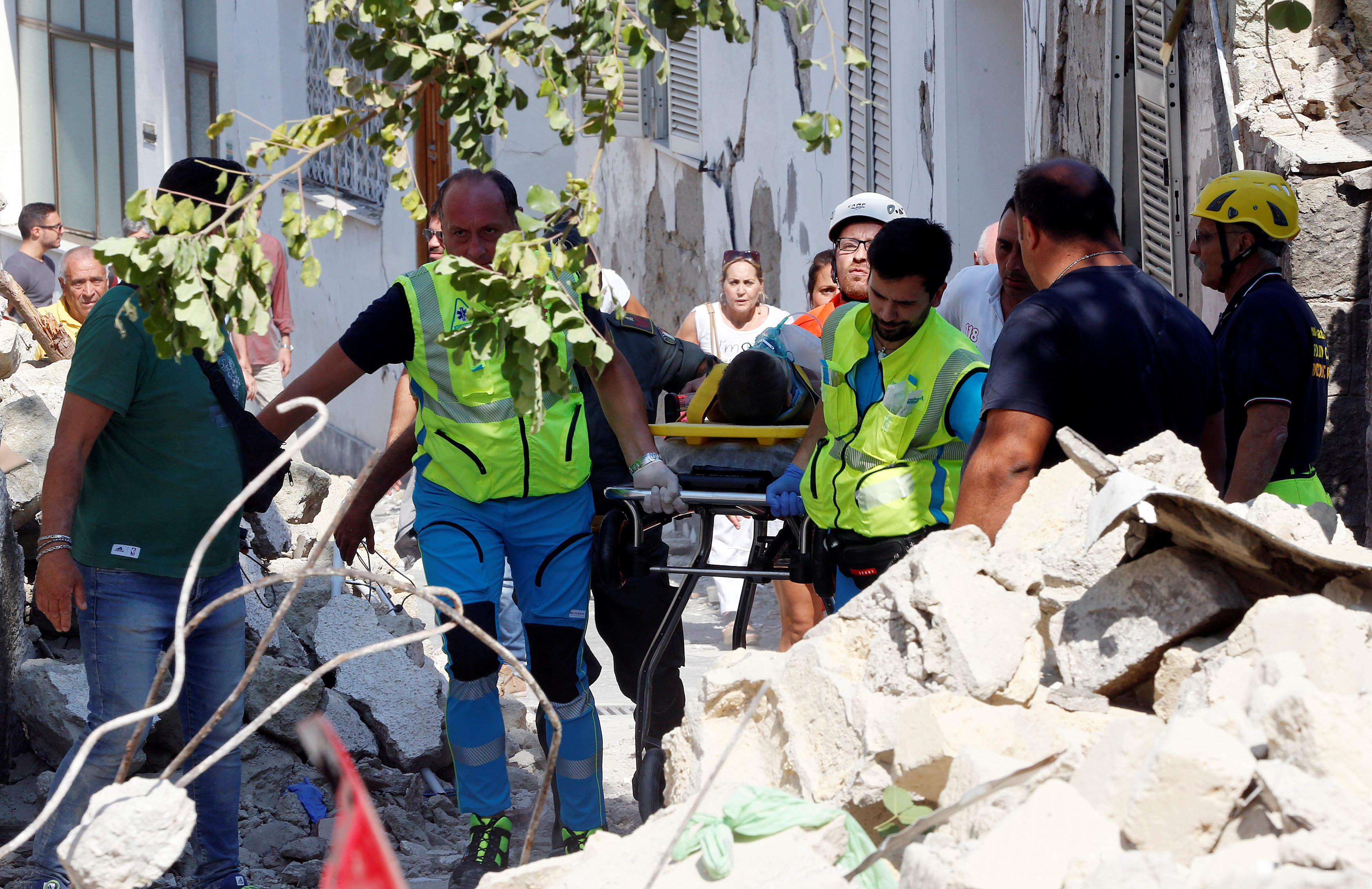
Rescue workers carry a child after an earthquake hit the island of Ischia, in Naples, Italy August 22, 2017. REUTERS/Ciro De Luca
(Philip Pullella reported from Rome; writing by Philip Pullella; Editing by Nick Macfie and Mark Trevelyan)


